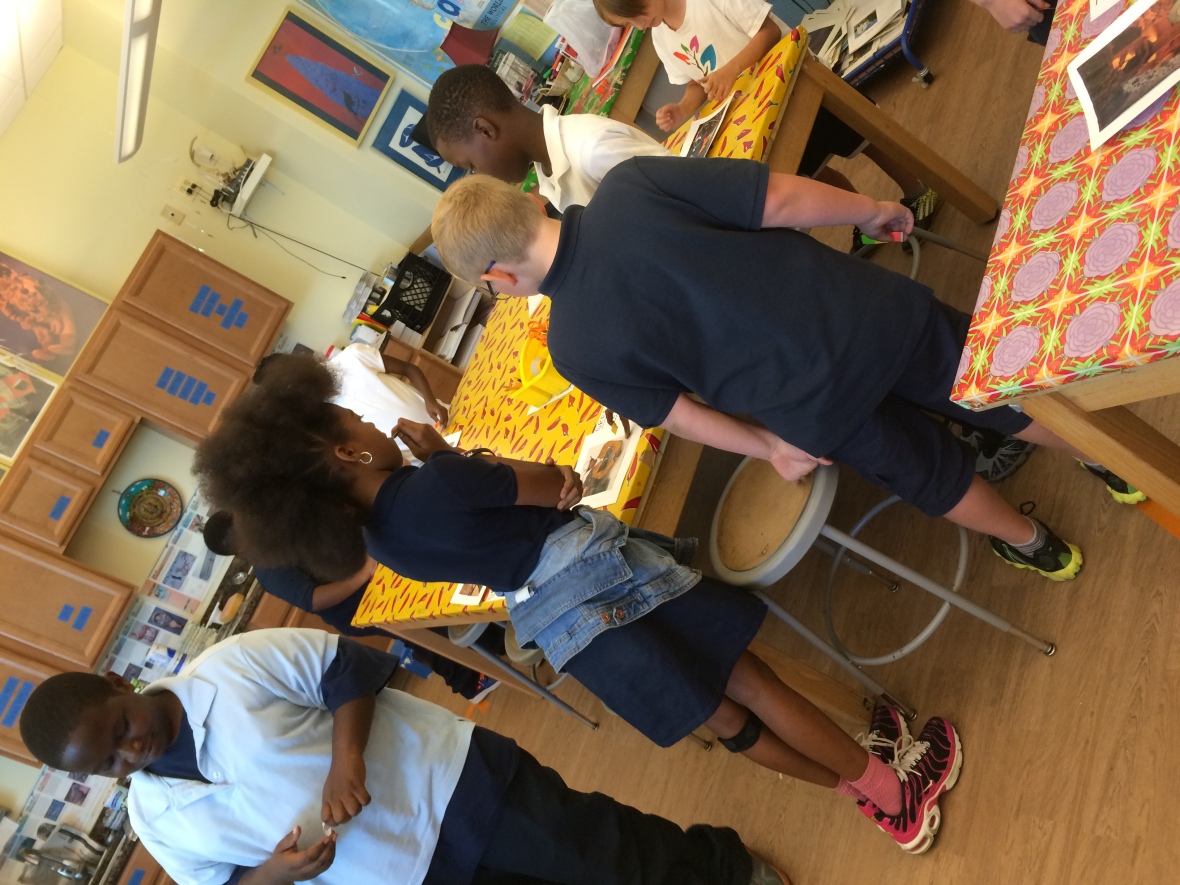Our first “big kid” unit of the school year is to get students accustomed to the idea that artists are decisive communicators who use the visual image to express their message from a unique viewpoint.
Each grade level (2nd -5th) is designated a ‘funky theme’ to be interpreted with new eyes. Students are asked to abstract this theme, use symbolism and technique to get the point across, but to do so in a way that intrigues and attracts the viewer.
Our text-based inspirations by grade level:
Next, we break our idea down in much the same way that an author does when setting up a story. We select a setting, characters, and plot actions. These literary elements guide our visual narrative and allow us to bring our themes to life without straying too far at any point in the creative process (which can be tempting with so much visual fodder on hand from magazines like National Geographic or Travel).
Students giving feedback about the titles of their peer’s work
A successful collage uses subtlety, fine craftsmanship, and irony to lure the viewer in. One, maybe two additions to the already existing photograph are enough to change a story and make it the artist’s own completely.
This student’s work is my favorite example of subtlety! Just two small additions changed the mood and meaning of this work! It’s also so believable!
Once the work is finished, the final element of this mini-unit is to become familiar with the somewhat uncomfortable but always necessary art of critique.
We place our work out there for our peers to dissect and adore. Our civilized system for doing so at the beginning of the year is to use a critique method I came up with called the Stop Light Critique (patent pending, just kidding).
Students are given a red, yellow, and green sticker, each worth a different point value (green worth 3 points, yellow 2, and red 1). Students circulate the room, as if at auction, and place their weighted bids or stickers on a student score card. Students are reminded that all stickers are valuable and that receiving no stickers at all is also worthwhile feedback.
Receiving no sticker can mean that the work may not have been as successful at communicating the theme, it may not have been as neat or as complete as hoped for, or that the level of creative risk-taking was less obvious than in other examples of student work. I tell the students that often times, the student work I cast my votes for do not always end up in the top 4 and that a difference in taste can account for why the general public and a given individual may differ on aesthetic.
I use the example of Monet. The majority of the world enjoys Monet’s soothing, cool colors and pleasant subject matter.
Water Lilies and Japanese Bridge, Claude Monet
Me, on the other hand, I prefer the macabre stylings of an Edward Gorey or Jean Dubuffet.
Edward Gorey
Apartment Houses, Paris, Jean Dubuffet
Enjoy the finished pieces. Try and guess which collage is interpreting which theme and whether or not the artist is successful at translating meaning through imagery. Think about which piece is drawing you in and beckoning you to look deeper, for that is the mark of a successful work of art!




























